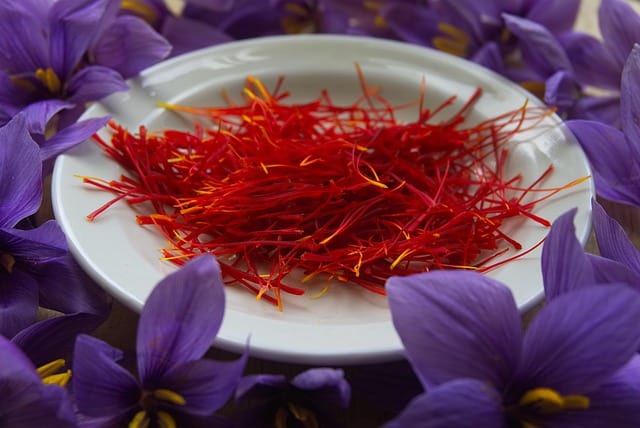
Saffron is hand-picked because it is the most delicate and labor-intensive of all the spices. The saffron crocus flower blooms for only a few weeks in the fall, and each flower only produces a few saffron threads which is the part of the flower used to make saffron spice.
The saffron threads must be carefully hand-picked from the flowers to ensure that they are not damaged in the process. This is done in the early morning when the flowers are still closed, to avoid bruising and to make sure that the threads are at their most flavorful and aromatic.
Also, the saffron threads are very tiny and delicate, and the process of picking them is highly intricate and requires a steady hand and a lot of patience. Machines are not able to pick the threads without damaging them.
Finally, saffron is considered as one of the most expensive spices in the world due to its labor-intensive production process, high demand and rarity. Growers cannot afford to take the risk of losing part of their crop due to its high value.
Tell me about the saffron crocus
The saffron crocus (Crocus sativus) is a small perennial plant that is grown for its deep red stigmas, which are used to make saffron spice. The saffron crocus is a member of the iris family and is native to the eastern Mediterranean region. It is a small plant that typically grows to about 20 centimeters (8 inches) tall.
The saffron crocus flowers in the fall, and each flower has three deep red stigmas, which are the part of the flower used to make saffron spice. The stigmas are carefully hand-picked from the flowers, dried, and then used to make the spice.
The saffron crocus is a hardy plant and can grow in a variety of soil types, but it prefers well-drained soil and full sun. It is also propagated by bulbs, which are planted in the fall and then harvested the following fall.
The plant is considered a symbol of love, happiness and good luck in many cultures. Saffron is one of the most expensive spices in the world due to its labor-intensive production process and rarity. In addition to its culinary uses, saffron has also been used for medicinal and dyeing purposes for centuries.
Explain the intensive saffron-growing process
The saffron crocus (Crocus sativus) is a labor-intensive crop to grow and harvest. The process of growing and harvesting saffron can be broken down into several key steps:
- Planting: Saffron crocus bulbs are planted in the fall, typically in well-drained soil and full sun. The bulbs need to be planted at least 6 inches deep and spaced 6 inches apart. The bulbs will then spend the winter dormant before sprouting in the spring.
- Growing: The saffron crocus plants will grow and develop throughout the spring and summer. They typically reach maturity in the fall, when they will begin to produce flowers.
- Harvesting: The saffron crocus flowers bloom for only a few weeks in the fall, and the flowers must be harvested by hand as soon as they open in the early morning. This is the most labor-intensive step, as each flower only produces a few saffron threads and the process of picking them is highly intricate and requires a steady hand and a lot of patience.
- Drying: After the saffron threads have been hand-picked, they must be dried quickly to prevent spoilage. This is typically done by laying the threads out in the sun or using a dehydrator.
- Packaging: Once the saffron threads are dry, they are packaged and sold as saffron spice.
Final thoughts
Growing saffron is highly labor-intensive, as it needs meticulous attention to each step, and that’s why it’s considered one of the most expensive spices in the world. The yield per acre is low, and it takes around 150,000 flowers to produce just one pound of saffron.
Does saffron expire? It’s worth noting given how expensive it is to purchase.
If you’re looking for a saffron substitute, check out my article about calendula which is referred to as a poor man’s saffron.


